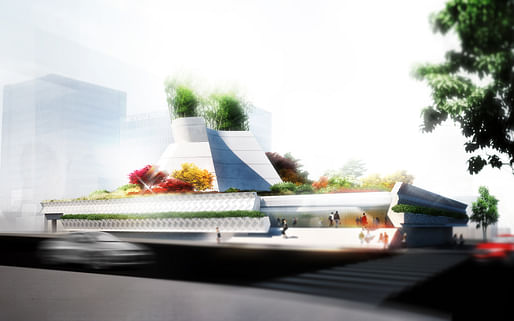

Architecture firm Morphosis has unveiled its sleek and verdant designs for the new Korean American National Museum in Los Angeles.
The two-story building is topped by a "displaced landscape" made up of plants native to the Korean peninsula and California, including maple and pine trees and bamboo shrubs. Described in a project statement as "a piece of Korea grafted onto Los Angeles," the rooftop garden overlooks a courtyard building designed to reference traditional Korean Hanok dwellings, a type of residential architecture designed and sited in relation to its surroundings. In the cold northern regions of the peninsula, for example, Hanok houses can be square-shaped, an approach that helps to retain heat and block cold winds; The approach has been adopted for the new museum, which is arranged with a series of interconnected galleries, meeting rooms, and offices circling a central open space.
Renderings for the project showcase a sculptural, concrete- and perforated metal panel-wrapped structure punctuated by a faceted promontory topped with a tuft of bamboo. Inside the building, white-walled, freeform galleries and support spaces circle a central hall topped by a giant oculus.
Not only does the design of the building intentionally reference traditional Korean architecture, but the design team itself, according to Morphosis, is led by a group of predominately Korean and Korean American architects and designers working under the direction of Morphosis founder Thom Mayne and Morphosis partner and project architect Eui-Sung Yi.

In a statement, Eui-Sung said, “This museum honors the sacrifices and hardships of our parents and grandparents while showcasing the fruits of those sacrifices: the accomplishments of future generations. We aimed to reflect this sentiment in our design.”
Jae Min Chang, board vice chair for the Korean American National
Museum, said via press release, “This building will stand as a vital institution for the millions of Korean Americans who have made this country their home, and will beautifully represent the strength and accomplishments of our community.”
The museum is scheduled to break ground in 2020 and is expected to be completed in 2022.
No Comments
Block this user
Are you sure you want to block this user and hide all related comments throughout the site?
Archinect
This is your first comment on Archinect. Your comment will be visible once approved.